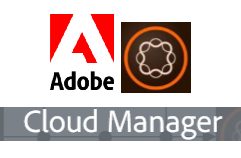As we know a bigger portion of the global audience accessing digital content doesn't speak English. So the content generated in English needs to be converted to other languages as required. In AEM we do this using various methods including manual process.
Necessity of agile global content management
For almost all companies translation means manual process of copy paste content in spreadsheets.
Common components of a Translation Management System(For E.g: Smartling)
AEM With Smartling - Advantages
AEM with Smartling extend Adobe Experience Manager’s capabilities with seamless access to a powerful translation management platform.
The combination of Adobe Experience Manager and Smartling provides users with a robust solution for translation, with full visibility and control across the entire organization. Smartling builds on Adobe Experience Manager’s localization framework, which enables to request translations with the click of a button.
Smartling has almost all of the common components of a Translation Management System.
Some of the features are listed below.
Why Smartling?
Smartling is one of the leading translation management platform to localize almost anything. Smartling's translation management system streamlines the translation process into largely automated and hands free undertaking.
With a focus on automation, scalability, and connectivity, Smartling helps developers tackle translation with technology that addresses current and future requirements
Below are some of the Smartling features
Site Link: SmartLing
Are there any other such translators?
Yes. Wordbee is one such tool for localization of content. It is a cloud-based collaborative translation and project management platform. Wordbee provides Beebox, a CMS connectivity solution to work with AEM.
Adobe AEM CMS can be integrated with Wordbee Translator via its Beebox connector. The AEM-Beebox helps to localize perfectly with minimal management time.
The Beebox Connector is a regular Adobe AEM package (bundle). This connector lets you automatically apply the right project workflow to the right content source. The package has a UI which enables translation jobs and activities. The AEM Connector communicates to the Beebox middleware.
Advantages
Read about Wordbee
AEM connector page
Necessity of agile global content management
- Automate translation management and user experience.
- Centralize all translation activity to a cloud based dashboard.
- Take help of analytics to improve translation quality.
For almost all companies translation means manual process of copy paste content in spreadsheets.
Common components of a Translation Management System(For E.g: Smartling)
- Cloud based and with translation services enabled
- Having Workflows
- Have a database
- Have a good connectivity across channels
- Ability to provide reports of any kind
- Should be Secure
- With a guidance and support
AEM With Smartling - Advantages
AEM with Smartling extend Adobe Experience Manager’s capabilities with seamless access to a powerful translation management platform.
The combination of Adobe Experience Manager and Smartling provides users with a robust solution for translation, with full visibility and control across the entire organization. Smartling builds on Adobe Experience Manager’s localization framework, which enables to request translations with the click of a button.
Smartling has almost all of the common components of a Translation Management System.
Some of the features are listed below.
- Helps to create high quality translations automatically
- Leverages any native frameworks for localization
- Translate page, DAM asset metadata, dictionaries, custom attributes , database content etc,
- Having a dashboard to control translation process and report generation
- Highly customizable
Why Smartling?
Smartling is one of the leading translation management platform to localize almost anything. Smartling's translation management system streamlines the translation process into largely automated and hands free undertaking.
With a focus on automation, scalability, and connectivity, Smartling helps developers tackle translation with technology that addresses current and future requirements
Below are some of the Smartling features
- Save Time & Money
- Reliable Technology
- Status and reporting
- omni-channel
- Highly extensible and secure
- Support for all major localization file formats
- Seamless integration with developer environment with Smartling SDK
- Automated generation of visual context for dynamic web applications and mobile apps
- Automatic data capture
- machine learning insights
- APIs with hundreds of endpoints
Site Link: SmartLing
Are there any other such translators?
Yes. Wordbee is one such tool for localization of content. It is a cloud-based collaborative translation and project management platform. Wordbee provides Beebox, a CMS connectivity solution to work with AEM.
Adobe AEM CMS can be integrated with Wordbee Translator via its Beebox connector. The AEM-Beebox helps to localize perfectly with minimal management time.
The Beebox Connector is a regular Adobe AEM package (bundle). This connector lets you automatically apply the right project workflow to the right content source. The package has a UI which enables translation jobs and activities. The AEM Connector communicates to the Beebox middleware.
Advantages
- The Beebox server is installed at the AEM/CQ owner’s premises.
- A single Beebox server can connect any number of content management systems with any number of Translation Management Systems or translation teams.
Read about Wordbee
AEM connector page















